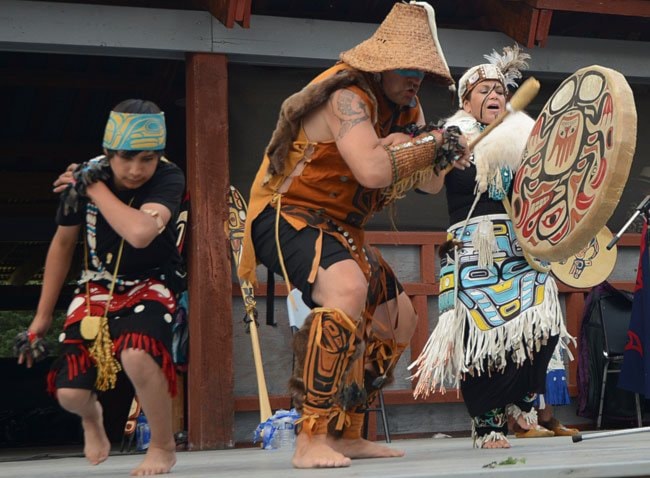Seven years ago Marilyn Jensen and five other dancers joined forces with the hopes of performing for tourists.
They struggled to attract any attention, even in their own traditional territory of Carcross/Tagish First Nation.
At the end of that summer, the Dakhka Khwaan Dancers could have easily disbanded. No one had come to see them perform. But by sticking together and persevering, they kept adding more songs to their repertoire and slowly developed a following.
The hard work has paid off in many ways.
Performances in Taiwan, New Zealand and the 2010 Vancouver Olympic Games, among other places, have earned the group international acclaim.
Now made up of 25 to 30 people, its members represent the inland Tlingit communities of Teslin Tlingit Council, Taku River Tlingit First Nation, Kluane First Nation and Kwanlin Dun First Nation.
Jensen, the group’s founder and manager, recently travelled to Ottawa to accept the National Cultural Tourism Award in recognition of the group’s commitment to the development and promotion of authentic and innovative cultural experiences.
She said it was an honour to receive the award, which proves how far the group has come since 2007.
“We didn’t expect it at all and it’s nice to see all the work we’ve done pay off,” she said.
“The group works so hard. They practise once a week and constantly compose new songs to see what we can do next.”
“To go from being ignored to this is very special.”
The number of songs they perform has grown from six to about 90, Jensen said, which is why their performances are constantly evolving.
“You’ll never see us do the same thing twice,” she said.
The traditional singing and dancing carries strong cultural significance, especially the clan songs.
Performers wear clothing that reflects their clans. Jensen, for example, often wears killer whale motifs but others wear wolves, ravens and eagles.
Both of the group’s song leaders are men, and they demonstrate their roles as warriors and protectors.
The women, meanwhile, are more graceful and dignified in their performances, Jensen said.
Performing at the Olympics has been the group’s most significant achievement to date, she said.
The group only had 15 minutes to rehearse. One of its members broke down in tears after realizing one of his dreams was materializing before his eyes.
“He said he’d dreamt about dancing in front of a bunch of people on a glass stage where there were killer whales,” Jensen said.
“He said it was the same as his dream except for the whales, but then I reminded him that there had been whales during the opening ceremony. That’s when he started crying and that made me cry, too.
“That was only three years after we started.”
The group hopes to do more international performances in the future, both to raise awareness of indigenous cultures and to have more opportunities to travel and discover the world.
“We also hope that every Yukon community will be dancing in their own style,” Jensen said.
“We want to encourage people to carry these traditions forward. It’s so healing. There’s an individual process of transformation and healing, and then a group process where you truly feel like you belong to something that’s bigger than you.”
Contact Myles Dolphin at myles@yukon-news.com
